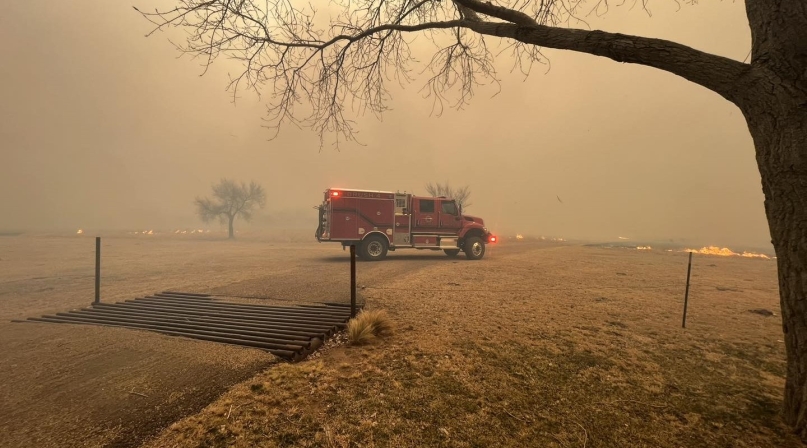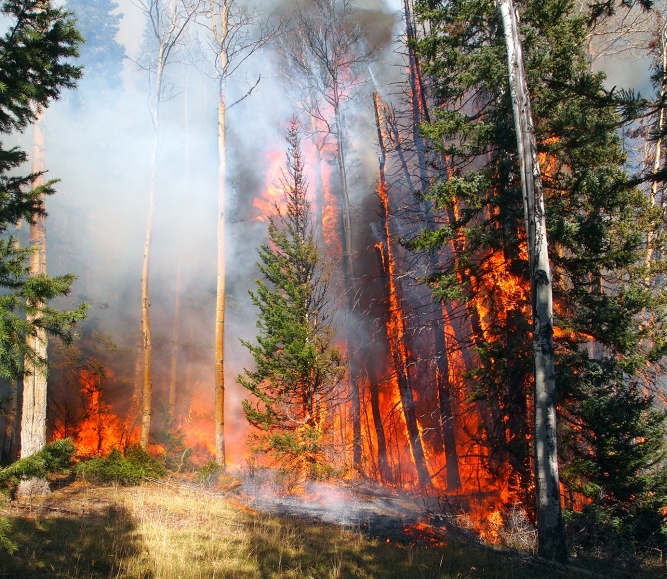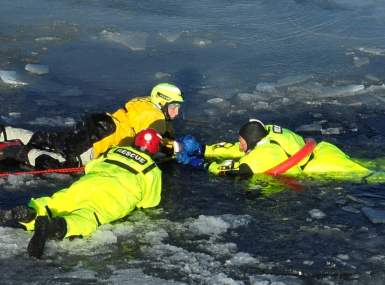Texas counties fight the largest wildfire in state history

Texas Gov. Greg Abbott declared a disaster in at least 60 West Texas counties last week as they continued to fight the largest wildfire in the state’s history.
The deadly wildfires have killed two people — including a woman trying to outrun a fast-moving fire in her truck — and torched homes and acres of ranchland. As of last week, the fire had ravaged more than 1.1 million acres or 1,700 square miles in West Texas and had spread into western Oklahoma.
All of the counties affected by the wildfires stood up their emergency operation centers on the orders of their county judges, who serve as emergency managers. A disaster declaration gives counties permission to use county equipment on private property, noted Susan M. Redford, executive director of the Texas Association of Counties and a former Ector County judge.
“I had one county judge call and ask if they could use county equipment to help clean up private property and absolutely, they can,” Redford said, adding that the region is getting help from all over the state.
The counties “are overwhelmed,” Redford said. “These are all small, very rural, mostly ranching communities. It’s really devastating for them right now.”
Counties are also responsible for helping evacuate some areas. Several of the county judges in the region ordered evacuations in communities.
Do more
“We suspect there is damage to precinct barns that hold road and bridge equipment that tend to be remote and outside of town,” Redford said.
The disaster declaration by the governor means the Texas Division of Emergency Management is deploying resources to the region from all over the state, she said.
Other fire departments can also get reimbursed to help fight the fires. “We’ve got fire departments as far south as San Antonio and Austin that are there helping,” Redford said.
President Biden said in a press conference that the federal government has sent 500 personnel into the area, including 100 federal fire-fighters as well as dozens of additional fire trucks, air tankers, small planes and helicopters. He noted that “FEMA has already guaranteed that Texas and Oklahoma will be reimbursed for the costs of keeping folks safe.”
Most fire departments in rural Texas counties are volunteer. Like many rural counties across the country, “the counties in that region do not have professional fire departments,” Redford said. “Some of the towns do. But the first responders who were first on the scene for this were all volunteers. It’s brutal to watch.”
As of last week, the wildfires continued to blaze hard-hit Gray, Hutchinson, Moore and Oldham counties.
“Farmers and ranchers from as far away as south Texas are bringing hay for livestock in West Texas.” Thousands of livestock have also perished in the fires.
Redford shared tips for other counties and associations facing such disasters. “From the lessons we have learned, it’s good to stay in contact with the leaders in any communities hit by disaster and make sure you’re there to help them in any way possible. We’ve written press releases, others we’ve helped with water and snacks for first responders and coordinate resources for assistance.”
County News
Congress confronts wildfire budgeting battle as year ends

Related News

County officials moonlight in search and rescue roles
For some county officials, participating in search and rescue operations is another way to serve their communities, and make it safer for people to enjoy natural recreation resources.

SUPPORT Reauthorization Act of 2025: What it means for counties
On December 1, the bipartisan SUPPORT for Patients and Communities (SUPPORT) Reauthorization Act of 2025 (H.R. 2483) was signed into law. The reauthorization renews vital federal funding for programs that seek to prevent opioid overdoses and expand treatment and recovery options.

DHS releases FY 2026 funding opportunities for World Cup and Counter-UAS grants
The U.S. Department of Homeland Security (DHS) and the Federal Emergency Management Agency (FEMA) have released the FY 2026 Notices of Funding Opportunity (NOFOs) for two major new homeland security grant programs: the FIFA World Cup Grant Program and the Counter-Unmanned Aircraft Systems (C-UAS) Grant Program.
